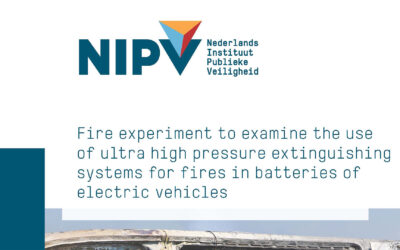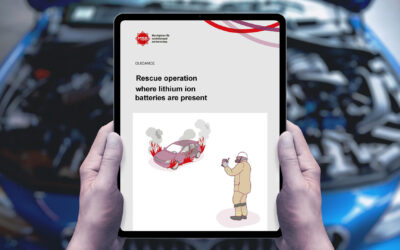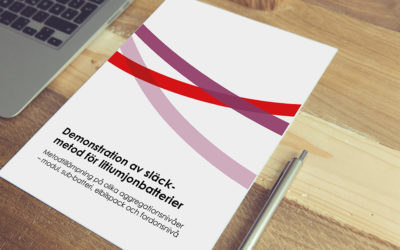Abstract
Firefighters operate in hazardous environments where exposure to toxic and carcinogenic substances in fire gases poses significant health risks, including increased incidences of cancer and cardiovascular diseases. This report studies the effectiveness of the SAVE (Scan, Attack, Ventilate, Enter) tactic, deploying ultra-high-pressure water mist and controlled ventilation before entering and retaking the fire compartment, in reducing toxic exposure compared to traditional breathing apparatus (BA) internal attacks.
We conducted comparative tests at the Guttasjön Fire Fighting Training Facility, using a 40-foot container as the fire compartment. The tests evaluated two firefighting methods: the conventional standard operation BA-attack and the SAVE tactic, which involves cooling fire gases externally with water mist and ventilating the fire compartment before firefighter entry. Firefighters’ exposure to contaminants was measured using samples from their protective equipment and analysed by gas chromatography-mass spectrometry (GC-MS).
Results from the initial tests in July showed inconclusive differences due to procedural deviations. However, subsequent tests in December, where proper SAVE procedure were followed, showed a clear reduction in contaminant levels, particularly polycyclic aromatic hydrocarbons (PAHs) such as phenanthrene and fluoranthene. The SAVE tactic significantly reduced the magnitude of contaminants and improved air quality, visibility within the fire compartment and temperature, suggesting a safer working environment for firefighters.
This study highlights the potential of SAVE tactics to improve firefighter safety by reducing exposure to toxic substances. Future research should include validation of the results and for instance comparative studies of physical absorption of substances between standard BA-attack and the SAVE tactic to highlight effects of a change in work-methods. The results underline the importance of tactical measures to minimise health risks and improve operational efficiency and safety in firefighting.


